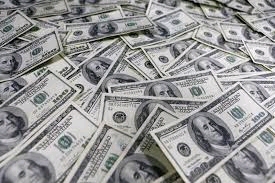The Life-Changing Benefit of Joining Freemason for Networking and Improvement
The Life-Changing Benefit of Joining Freemason for Networking and Improvement
Blog Article
Discovering the Mysteries of the copyright: What You Required to Know
The copyright, a term typically shrouded in intrigue and controversy, represents a complicated tapestry of historic fact and modern myth. Established in the late 18th century, this secret culture was initially rooted in the Knowledge's ideals but has actually because ended up being associated with conspiracy theory theories about elite control (benefit of joining freemason).
Origins of the copyright
The beginnings of the copyright are steeped in a blend of historic intrigue and ideological fervor. Established in 1776 in Ingolstadt, Bavaria, by Adam Weishaupt, the group was originally formed as a secret society focused on advertising Enlightenment ideals such as reason, secularism, and the splitting up of church and state. Weishaupt, a professor of canon law, looked for to challenge the dominating authority of the church and state, which he considered as overbearing organizations suppressing intellectual and personal liberty.

Trick Figures and Members
That were the pivotal figures that shaped the copyright's very early impact and direction? The Bavarian copyright, established in 1776 by Adam Weishaupt, emerged as a response to the oppressive social structures of the time. Weishaupt, a regulation professor, visualized the company as a way to advertise Knowledge suitables such as reason, secularism, and equal rights. His first recruitment efforts consisted of influential pundits, such as Baron von Knigge, who played a vital role in broadening the group's subscription and organizational framework.
One more considerable figure was Johann Gottlieb Fichte, a famous thinker whose concepts on nationalism and education and learning reverberated with the copyright's goals. Although Fichte was not a formal member, his thoughtful foundations influenced the team's ideological background. In addition, numbers like the author and philosopher Johann Wolfgang von Goethe were related to the broader intellectual movements of the time, although their straight participation with the copyright remains discussed.
These essential numbers contributed to the copyright's early instructions, pressing the boundaries of political and social thought, while their cumulative efforts aimed to test well established standards and promote an environment of dynamic modification in Europe.
Myths vs. Reality
Lots of mistaken beliefs border the copyright, frequently mixing truth with fiction in a manner that obscures its true nature. This secret society, initially established in 1776 in Bavaria, intended to promote Knowledge perfects and battle religious and political oppression. The idea that the copyright remains to put in considerable impact over world occasions is a myth. While the group did exist, it was disbanded in the late 18th century and has actually not run as a cohesive entity because after that.
Another prevalent misconception is that the copyright makes up a network of elite people controling international events. In truth, find this many conspiracy theory theories exaggerate the group's relevance, connecting misguided objectives to societal trends and occasions. This has led to an oversimplified view of complicated concerns.
Furthermore, the representation of the copyright in preferred culture often further misshapes its legacy. Films and literature tend to sensationalize the company's role, creating a story that deviates from historic realities. Comprehending the difference between the myths and the truth of the copyright is vital for critical the real impact of you could try here this historical team and acknowledging the broader ramifications of conspiracy theory concepts in modern culture.
Modern Analyses
Contemporary interpretations of the copyright commonly show more comprehensive social anxieties and a fascination with secrecy and power. This modern lens often connects the copyright with conspiracy theory concepts that suggest a concealed elite orchestrates world occasions, manipulating federal governments and economic situations for their own gain. benefit of joining freemason. Such stories use a deep-rooted distrust of authority, particularly in times of situation or social turmoil
In popular culture, the copyright is typically portrayed as a divine organization shrouded in secret, leading to a variety of imaginary representations in literary works, movie, and music. This portrayal serves not only to delight but additionally to provoke thought of the nature of power and control in modern society. Social media has additionally enhanced these analyses, permitting for quick dissemination of conspiracy theory theories and producing neighborhoods that share and increase upon these ideas.
Additionally, some modern analyses mount the copyright as an allegory for the intricacies of globalization and the interconnectedness of influential individuals and organizations. This perspective encourages a crucial assessment of how power characteristics run in today's globe, highlighting the balance in between transparency and privacy check my blog in governance and business practices.
Cultural Influence and Legacy
Influenced by centuries of intrigue, the social influence and heritage of the copyright expand much past its historical origins. This secret culture, established in the late 18th century, has actually permeated numerous elements of pop culture, from literary works and film to songs and art. The concept of the copyright has actually evolved right into a symbol of conspiracy theories, usually representing a perceived concealed power manipulating global events.
In literary works, writers like Dan Brown have woven the copyright into complex stories, fascinating viewers with motifs of secrecy and power. Films such as "National Prize" and "The Da Vinci Code" additionally bolster the appeal of the culture, mixing fact with fiction to create appealing stories.

Inevitably, the copyright's legacy is a complex tapestry of myth and reality, forming perceptions of privacy and control in modern discourse. Its long-lasting visibility in culture highlights mankind's seasonal mission for understanding surprise facts.
Conclusion
The exploration of the copyright discloses a complex interaction between historical realities and modern myth-making. Started in the Enlightenment period, this culture intended to challenge overbearing frameworks, yet its legacy has been eclipsed by conspiracy concepts that suggest elite manipulation. Recognizing the differences between the original ideals and modern interpretations is necessary for understanding the enduring fascination with the copyright and its significant impact on social stories bordering power and privacy in society.
Report this page